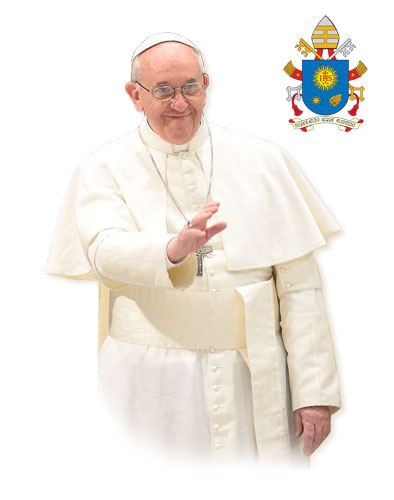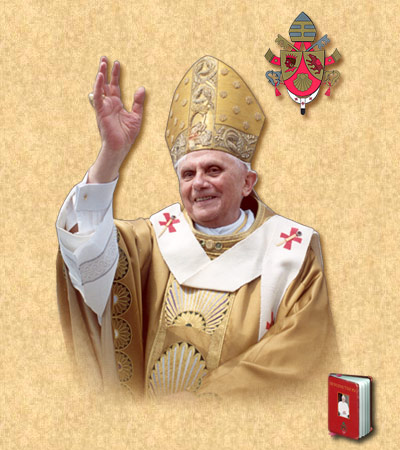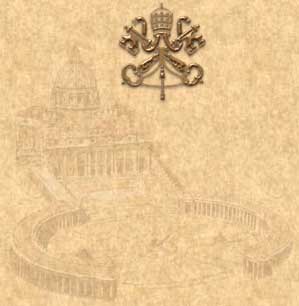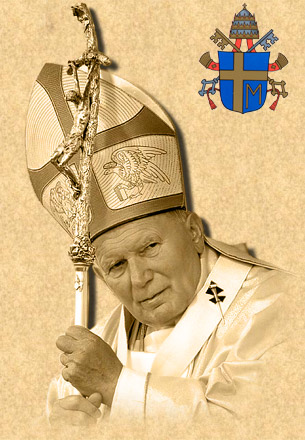

|
topher
Since Jul 29, 1998
| |||||
|
| ||||||
Fall, 2010 by Christopher M. Hoss
"If you want to know what is important in life, just ask someone who has gone through their last judgement before God. This is the Judgement that determines if one goes to Heaven, Hell, or wherever (Jesus alludes that other places might exist in John 3:15)."Perhaps our guide should be the two greatest commandments (in life): (1) (and most important) Love God with your whole heart, mind, and soul. And (2) (secondary) Love your neighbor as yourself."
Christopher M. Hoss,
The following is my interpretation: This comes from the name Christopher, which literally means "Christ-bearer". Using only the 't' (symbolic of the cross) of Christ, one would have "cross bearer". If we are to be considered Christians, then perhaps we are all topher's or "cross bearers"
24 Then Jesus said to his disciples, "If anyone would come after me, he must deny himself and take up his cross and follow me. 25 For whoever wants to save his life will lose it, but whoever loses his life for me will find it. 26 What good will it be for a man if he gains the whole world, yet forfeits his soul? Or what can a man give in exchange for his soul? 27 For the Son of Man is going to come in his Father's glory with his angels, and then he will reward each person according to what he has done. 28 I tell you the truth, some who are standing here will not taste death before they see the Son of Man coming in his kingdom." What is Faithful Citizenship? It is my belief that Faithful Citizenship is our duty -- at least for Christians. This duty is implemented by prayer and how we live our lives. As Christians, we must set good examples for others, and it will be expected of us to make sacrifices (carrying our cross).There are four examples that would show one how to implement Faithful Citizenship in our lives. Key to all of these examples are faith, and putting that faith into action. The first requirement of Faithful Citizenship is that Christians must be involved in the political process of the Government. In the case of E.D.S.A., which will be described later, twice a peaceful revolution occurred in the Philippines. This required the involvement of the people in the political process. Christians must also be Citizens. It is clear to most Christians the meaning of the conversion of the Good Thief -- at the crucifixion of Jesus. But the conversion of the Centurion is important as it provided Jesus with a Roman protector of His flock. In a sense, it was how Jesus was in involved in Faithful Citizenship -- converting a Roman military leader just before or at the time of His death. The first example is the Battle of Lepanto. It took courage for the Western nations of Europe to band together and stand against the Turkish fleet -- which might have overrun Western Europe with the Islamic faith. In this great battle, all of the sailors were ordered to pray. It became not only a military battle but also a spiritual battle for this reason. The Christian forces seemed to be on the verge of a military defeat when there seemed to be a Divine intervention -- a change in the wind that was extremely unfavorable to the Turkish fleet and gave the victory to the Christians. The second example is found in the events occurring at Fatima, Portugal from May of 1917 to October of 1917. This happened at a place known locally as Cova de Iria or 'Cove of Peace'. These three children promoted the message of prayer and the warning about aspects of the Twentieth Century -- such as the fact that Fashions that would offend Jesus Christ. There were also three parts of a secret entrusted to these three shepherd children. The first two parts of this secret was that a second a more terrible war than World War I would occur if people would not repent of their sinful ways. The other part of the secret was a warning about Russia spreading its errors around the world. This second part seemed to be cryptic -- since the October 1917 Revolution had not yet occurred. Russia seemed to be a very impotent country at this time. The children and others were unaware that this was a reference to Russia spreading Communism around the world. The final part of the secret was not revealed until the start of the Twenty-first Century. Larger and larger crowds started to gather at the Cova de Iria every 13th of the month. The children predicted that a miracle would occur. This miracle would occur on the 13th of October, 1917 -- exactly 33 years to the day after the vision of Pope Leo XIII with the coming battle between Satan and Saint Michael the Archangel. The events at Fatima, Portugal caused a direct clash between the atheistic government of Portugal and the three shepherd children. The children were even thrown into jail -- to prevent them from being at the Cove of Peace on the 13th of August, 1917. It was PRAYER that the children used to defeat this atheistic government. It should be noted that the three children were supported by thousands of people in prayer and action (by showing up on the 13th of the month in Cova de Iria. The third example is the history behind the shrine of Our Lady of E.D.S.A. Many people in the Philippines believe in the power of prayer as a means to political change. But these same people took a courageous stand with their faith and defied a military force. This story can be found at The Story of Our Lady of EDSA. EDSA stands for Ephiphano de los Santos Avenue -- which is in the Quezon City portion of Manila in the Philippines. This story is not very well known in the United States. Suffice it to say that events at this place twice toppled governments in the Phillipines. Perhaps the greatest story of an individual performing his role as a faithful citizen is that of Gabriele Possenti. In this fourth story of Faithful Citizenship is that of Gabriele Possenti, a young monk training to be a Catholic priest in a Mountain village -- the village of Isola. As only a monk in that mountain village, took on twelve hoodlums who were pillaging, raping, and burning the village he was in. He was able to defeat the twelve men single-handedly. Each of the twelve men had pistols when he set out to engage them. He was initially unarmed. Since the marauders were pre-occupied with looting, he was able to "steal" two of the pistols from the pillagers... This is the story of St Gabriele Possenti -- or the Patron Saint of Handguns! It should be noted that the village's name, in a sense, was very symbolic. 'Isola' standing for isolated. What is one to do in an isolated village when confronted by a superior force of men that is looting, raping and burning the village? In this case, it was 12 armed men against a sickly monk. [Gabriele Possenti had been sent to the village for reasons of health. It was hoped his health might improve in the mountain air.] In such an isolated situation, what would you have done? Would you have had the courage to have faith in God [and trust in God!], and stand up and fight these marauders? Gabriele Possenti had such faith! We should not be afraid to lay down our lives for others if we are truly Christians. Did not Christ do that for us? The above is from wikipedia.org: Samuel Eliot Morison: American Historian, Sailor, Scholar, Author, and Pulitzer Prize winner. Samuel Eliot Morison is the official US Naval Historian of World War II. His fifteen volume work contains detailed accounts of the Naval Actions of World War II by the ships of the US Navy. This was the most impressive arsenal of anti-aircraft guns on any US warship: it had "eleventy" protection or a total of 110 Anti-Aircraft guns. In contrast the USS Washington and USS North Carolina had only 36 anti-aircraft guns -- about 1/3 the number of anti-aircraft guns fielded by the USS South Dakota. The first of these two night engagements between warships of the United States and Japan saw the US lose Admirals Callaghan and Scott, as well as the story of the tragedy of the five Sullivan brothers. The Japanese were turned back and lost a battleship crippled from the night before -- easy prey to American aircraft at Henderson Field, which later sent this Japanese battleship to the bottom. The next battle would see the first battleship-to-battleship encounter between Japan and the United States in World War II. For the Joust of the Giants, the United States had two modern battleships, the USS South Dakota and the USS Washington, to throw at the Japanese task force. The weak link for the US forces was the destroyer screen -- a scratch team that had not worked together and taken from various Destroyer divisions. This would see only a single destroyer of this screen survive. There was the great lesson proved by this battle -- the benefit of repeated practice and drilling. Admiral Willis Augustus Lee was a great believer in this -- hone the skills of the seaman so that when his battleship engaged the enemy, it was firing as rapidly and as accurately as possible. The application of repeated practice and training was demonstrated by the perfection seen in engagements by Admiral Willis Augustus Lee at Guadalcanal and later by31 Knot Arleigh A Burke. Arleigh A. Burke proved the benefit of repeated practice in his engagements in World War II. Many people should learn by the good examples of these two US Naval leaders of World War II. Today, the Aegis Destroyers are also known as the Arleigh A. Burke Class of Destroyers. When the USS Washington decided to open fire on the opposing Japanese battleship, the USS Washington fired only seventy-five of its 16-inch rounds in a period of a few minutes. There were nine devastating hits of the 16-inch rounds on the Japanese battleship. Additionally, the USS Washington scored over 40 hits with its 5-inch Dual Purpose guns. The Japanese loudly complained about these 5-inch guns as being illegal and unfair. They were in fact semi-automatic (newsreels show how these guns were semi-automatic). Additionally, these 5 inch guns had the capability to provide both Anti-Aircraft cover as well as be used for surface action gunfire/shore bombardment. With Admiral Willis Augustus Lee at the command of the USS Washington, the United States decisively turned the tide at Guadalcanal -- in the second battle. In these two engagements of November 13-15, 1942, the Japanese lost two battleships as well as a number of other ships. The key goal of these night attacks by the Japanese was the bombardment of Henderson Field. The Japanese failed in bombarding Henderson Field. This allowed the US to use the Henderson Field airfield as a dagger at the throat of the Japanese in the Solomon Islands. With the dispatching of the two Japanese battleships to the bottom, the Japanese did not have any capital ships in the area. The Japanese would pay dearly for being unable to interrupt the operation of Henderson Airfield on Guadalcanal. After this point, the United States was in a position to strengthen its position on Guadalcanal.
What is a topher?
Matt 16:24-28 (NIV)





Samuel Eliot Morison Remembered...
Samuel Eliot Morison (July 9, 1887 – May 15, 1976) was an American historian, noted for producing works of maritime history that were both authoritative and highly readable. A sailor as well as a scholar, Morison garnered numerous honors, including two Pulitzer Prizes, two Bancroft Prizes, and the Presidential Medal of Freedom.
Gallant Protector of Carriers: the USS South Dakota
The USS Enterprise had the tremendous AA support of the USS South Dakota for the battle of Santa Cruz Islands. The armament for the USS South Dakota besides her 9 16 inch guns were an impressive ability to shoot down enemy aircraft. This was comprised of an array of 16 of the 5 inch "Dual Purpose" guns, 68 40mm Swedish Bofors and 26 20mm Swedish Bofors.
The Naval Battles of Guadalcanal: November 12-15, 1942
The battle for Guadalcanal raged fast and furious in the November crisis of 1942. There had been two prior Naval Battles for Guadalcanal. At stake was the strategic airbase of Guadalcanal. This airbase was started by the Japanese, but quickly seized by the United States in August of 1942. Admiral Chester Nimitz was looking for some way to follow up the decisive victory at Midway. Guadalcanal appeared to be a key in the Pacific campaign.
A Battleship Named Washington and an Admiral named Lee...
The USS Washington, after an earlier skirmish, joined the USS South Dakota, found the opposing Japanese Battleship on radar. Before opening fire, Admiral Lee made sure that this was not the USS South Dakota, and bravely checked fire as the range closed with the enemy.
After the victories at Guadalcanal in the November crisis, Winston Churchill spoke of this as marking:
'The End of the Beginning'
|


|